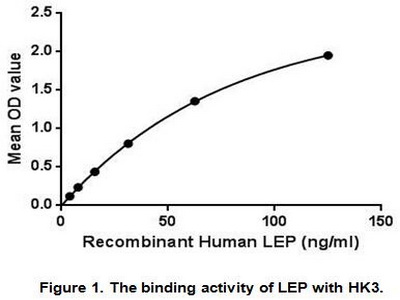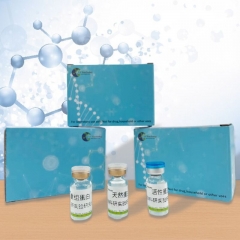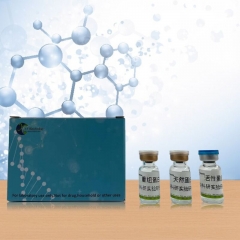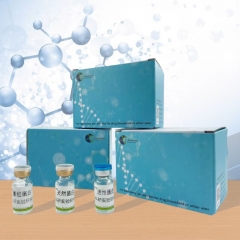Active Leptin (LEP)
瘦素(LEP)活性蛋白
[ PROPERTIES ]
Source: Prokaryotic expression. Host: E. coli
Residues: Val22~Cys167
Tags: Two N-terminal Tags, His-tag and GST-tag
Purity: >95%
Buffer Formulation: 20mM Tris, 150mM NaCl, pH8.0, containing 0.05% sarcosyl and 5% trehalose.
Applications: Cell culture; Activity Assays.
(May be suitable for use in other assays to be determined by the end user.)
Predicted isoelectric point: 5.7
Predicted Molecular Mass: 46.0kDa
Accurate Molecular Mass: 46kDa as determined by SDS-PAGE reducing conditions.
[ USAGE ]
Reconstitute in 20mM Tris, 150mM NaCl (pH8.0) to a concentration of 0.1-1.0mg/mL. Do not vortex.
[ STORAGE AND STABILITY ]
Storage: Avoid repeated freeze/thaw cycles.
Store at 2-8ºC for one month.
Aliquot and store at -80ºC for 12 months.
Stability Test: The thermal stability is described by the loss rate. The loss rate was determined by accelerated thermal degradation test, that is, incubate the protein at 37°C for 48h, and no obvious degradation and precipitation were observed. The loss rate is less than 5% within the expiration date under appropriate storage condition.
[ ACTIVITY ]
Leptin is a hormone made by adipose cells that helps to regulate energy balance by inhibiting hunger. Many of leptin's effects are mediated through neuropeptide- containing neurons and neuropeptide receptors in the hypothalamus. Although regulation of fat stores is deemed to be the primary function of leptin, it also plays a role in other physiological processes, as evidenced by its multiple sites of synthesis other than fat cells, and the multiple cell types beside hypothalamic cells that have leptin receptors. Besides, Hexokinase 3, White Cell (HK3) has been identified as an interactor of LEP, thus a binding ELISA assay was conducted to detect the interaction of recombinant human LEP and recombinant human HK3. Briefly, LEP were diluted serially in PBS, with 0.01% BSA (pH 7.4). Duplicate samples of 100uL were then transferred to HK3-coated microtiter wells and incubated for 2h at 37℃. Wells were washed with PBST and incubated for 1h with anti-LEPpAb, then aspirated and washed 3 times. After incubation with HRP labelled secondary antibody, wells were aspirated and washed 3 times. With the addition of substrate solution, wells were incubated 15-25 minutes at 37℃. Finally, add 50µL stop solution to the wells and read at 450nm immediately. The binding activity of of LEP and HK3 was shown in Figure 1, and this effect was in a dose dependent manner.

Figure 1. The binding activity of LEP with HK3.
[ IDENTIFICATION ]

 在线客服1号
在线客服1号












